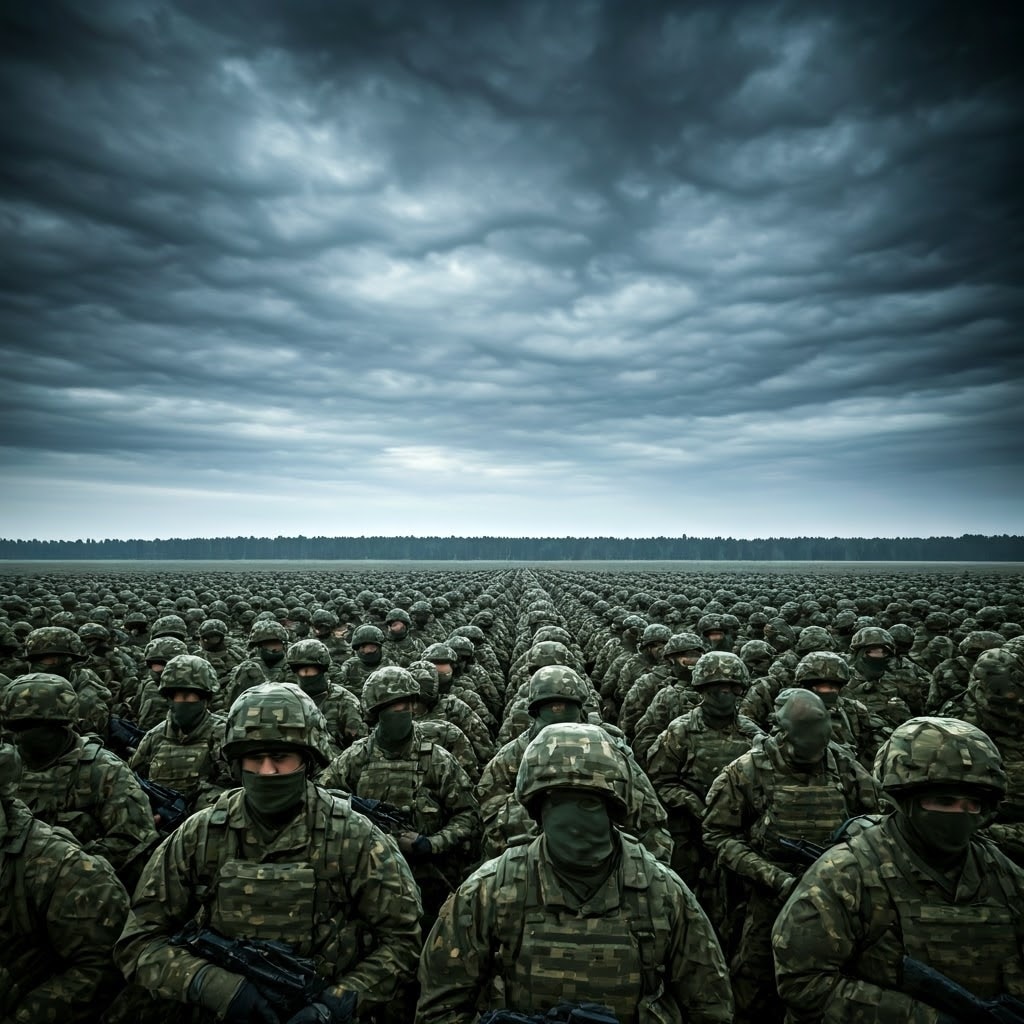European nations are gearing up for an all-out war on the continent as Ukraine launched US-made missiles into Russia for the first time and Vladimir Putin officially lowered the threshold for Moscow to consider a nuclear strike.
Germany’s foreign minister yesterday vowed her country ‘will not be intimidated’ by Putin, just one day after German media revealed the nation will transform into a NATO staging ground if the conflict to the East should escalate.
According to a 1,000-page document entitled ‘Operationsplan Deutschland’, Germany would reportedly host hundreds of thousands of troops from NATO countries and serve as a logistics hub for sending huge quantities of military equipment, food and medicine toward the front.
A summer report by Der Spiegel said that Germany could host as many as 800,000 soldiers from the security bloc as they transit to posts further East.
The German army is also instructing companies and civilians on how to protect key infrastructure and mobilize for national defense, envisaging a situation in which Russia expands drone flights, spying operations, and sabotage attacks across Europe.
Businesses have been advised to create crisis plans detailing employee responsibilities during emergencies and will be instructed to stockpile diesel generators or install wind turbines to ensure energy independence.
Germany’s preparation follows examples set by Nordic countries, where pamphlets and emails have already been sent to millions of homes with advice on seeking shelter, stockpiling supplies and rudimentary military training.
Finland reminded its citizens of their ‘national defence obligation’. It recently launched a new information website, while Sweden laid out a detailed guide on seeking shelter and what to do in case of a nuclear attack.
Their instruction manuals follow similar advice issued by their Baltic neighbors, Norway and Denmark, which both publish checklists for food and medicine supplies citizens should have ready.
Meanwhile, the US is set to provide Ukraine’s army with shipments of landmines to slow the advance of Russian ground troops as Putin’s forces wear down Ukrainian defensive lines in Donetsk.
Officials in Washington confirmed late last night that American anti-personnel mines would be sent to Ukraine on the proviso the punishing weapons are only used to repel Russian attacks on Ukrainian territory.
Putin yesterday signed off on an updated version of the Kremlin’s nuclear doctrine that broadens the scope for Moscow to turn to its fearsome atomic arsenal on the same day that US-made missiles rained down on Russian soil.
The new document, first announced in September, allows Putin’s strategic forces to deploy their devastating weapons if Russia or Belarus is threatened by a non-nuclear nation supported by a nuclear power.
Threats that could warrant a nuclear response from Russia’s leadership include an attack with conventional missiles, drones or other aircraft, according to the updated document.
Ukraine’s strike on an ammunition depot in Russia’s Bryansk region yesterday with US-supplied ATACMS (Army Tactical Missile System) meets these criteria, with Moscow saying that it marks a ‘new phase of the Western war’.
‘This is, of course, a signal that they want to escalate,’ Russian foreign minister Sergei Lavrov said, while foreign intelligence chief Sergei Naryshkin said attempts by NATO countries to facilitate Ukrainian missile strikes deep inside Russia ‘would not go unpunished’.
But Ukraine’s foreign ministry issued a defiant statement in spite of the Kremlin’s nuclear sabre-rattling, declaring that ‘Ukraine will never submit to the occupiers and the Russian military will be punished for violating international law’.
‘We need peace through strength, not appeasement,’ the ministry added, as Volodymyr Zelensky called on Kyiv’s allies to ‘force’ Moscow into a ‘just peace’ and vowed his troops would ‘never surrender’.
The US provision of ATACMS to Ukraine for strikes in Russia along with shipments of anti-personnel mines suggests the Biden administration is scrambling to leave Ukraine on the best possible footing ahead of Donald Trump’s return to the White House.










